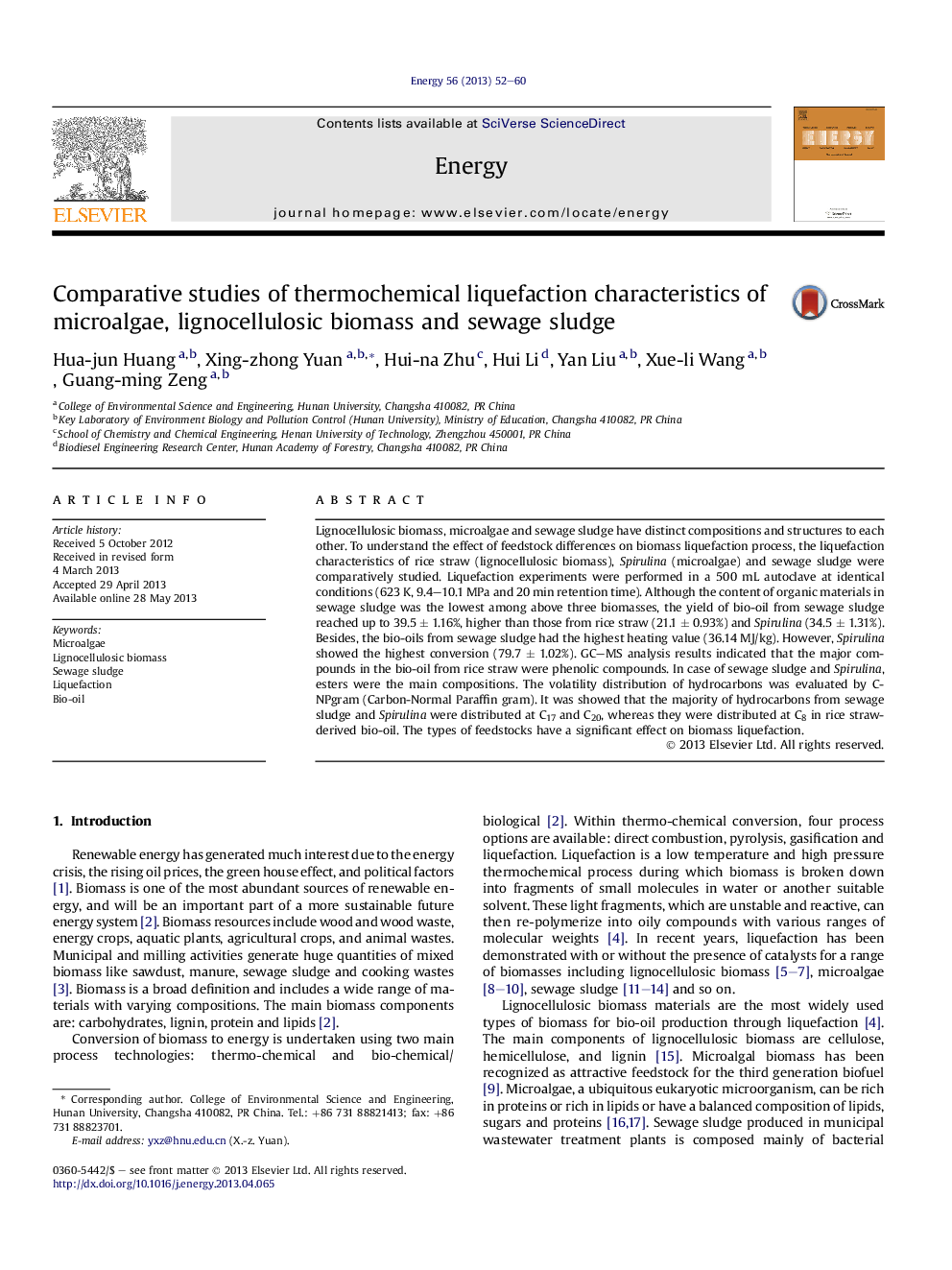| کد مقاله | کد نشریه | سال انتشار | مقاله انگلیسی | نسخه تمام متن |
|---|---|---|---|---|
| 1733133 | 1521490 | 2013 | 9 صفحه PDF | دانلود رایگان |

• Rice straw, sewage sludge and Spirulina were liquefied at identical conditions.
• Sewage sludge produced the highest bio-oil yield but the lowest conversion rate.
• The composition of bio-oil from rice straw consisted mainly of phenolic compound.
• The major hydrocarbons were esters in both sewage sludge and Spirulina bio-oils.
• Among three bio-oils, rice straw bio-oil showed a distinct volatility distribution.
Lignocellulosic biomass, microalgae and sewage sludge have distinct compositions and structures to each other. To understand the effect of feedstock differences on biomass liquefaction process, the liquefaction characteristics of rice straw (lignocellulosic biomass), Spirulina (microalgae) and sewage sludge were comparatively studied. Liquefaction experiments were performed in a 500 mL autoclave at identical conditions (623 K, 9.4–10.1 MPa and 20 min retention time). Although the content of organic materials in sewage sludge was the lowest among above three biomasses, the yield of bio-oil from sewage sludge reached up to 39.5 ± 1.16%, higher than those from rice straw (21.1 ± 0.93%) and Spirulina (34.5 ± 1.31%). Besides, the bio-oils from sewage sludge had the highest heating value (36.14 MJ/kg). However, Spirulina showed the highest conversion (79.7 ± 1.02%). GC–MS analysis results indicated that the major compounds in the bio-oil from rice straw were phenolic compounds. In case of sewage sludge and Spirulina, esters were the main compositions. The volatility distribution of hydrocarbons was evaluated by C-NPgram (Carbon-Normal Paraffin gram). It was showed that the majority of hydrocarbons from sewage sludge and Spirulina were distributed at C17 and C20, whereas they were distributed at C8 in rice straw-derived bio-oil. The types of feedstocks have a significant effect on biomass liquefaction.
Journal: Energy - Volume 56, 1 July 2013, Pages 52–60